Ridged Roof Furniture by Ainė Bunikytė
You can enjoy breakfast, lunch or dinner on top of your sloping roof using this furniture by Lithuanian design graduate Ainė Bunikytė (+ slideshow).
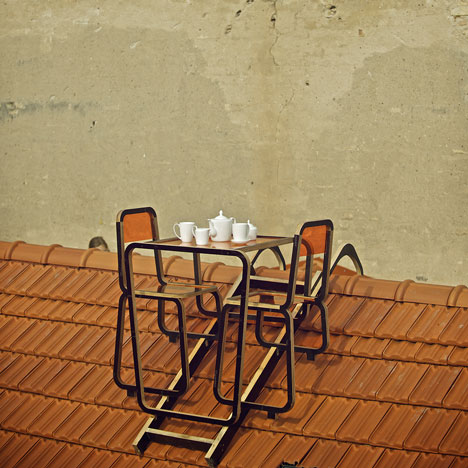
Entitled Ridged Roof Furniture, the transparent perspex table and two accompanying chairs can be secured to any building with a pitched roof and are attached to a ladder that hangs over the central ridge.
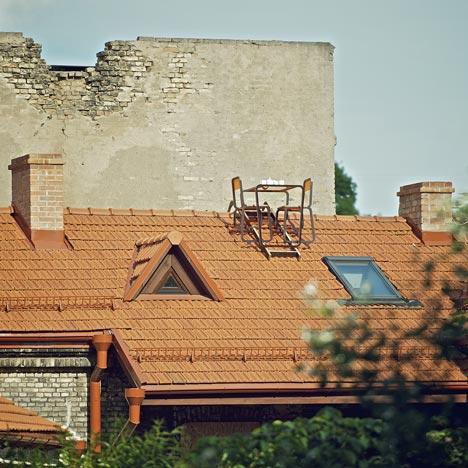
The rooftop seating area currently offers a view of the city from above the Užupis art incubator in Vilnius, but is inaccessible to anyone without their own ladder.
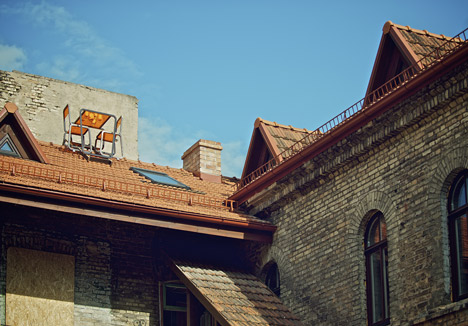
Bunikytė was inspired by childhood memories of climbing onto rooftops to create the furniture for her graduation project at the Vilnius Academy of Art.
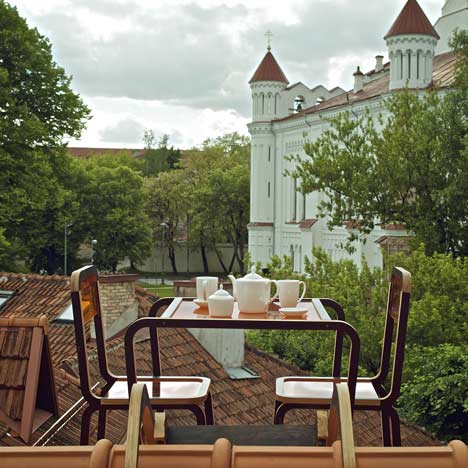
Other graduate projects from this year include a tactile speaker and a set of tools controlled by mouth movements.
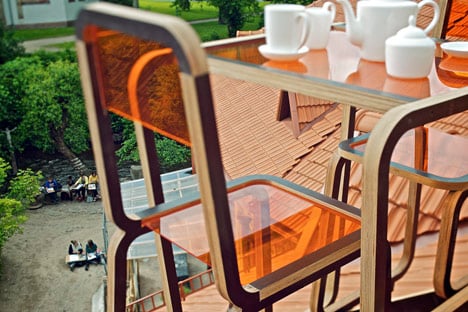
Photography is by Kernius Pauliukonis.
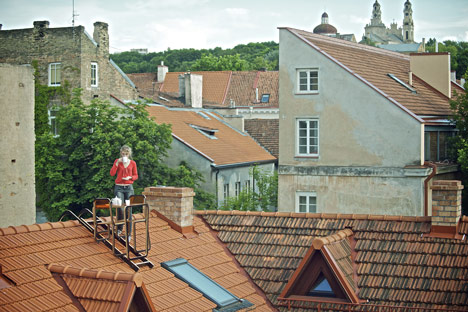
Here's some text from the designer:
Ainė’s Bunikytė’s work is a table served on a ridged roof, it calls for a sip of tea over the old town while promising a romantic adventure. The cause of this object - to present vision, an offer to find a personal space, to dive deep into the dream envisioned by Ainė. Just as far the author believes, nobody has ever made any furniture for an angled rooftop.
The art design project with a series of future proposals and a realized one was presented for her graduation from master studies in Vilnius Academy of Art. This para-functional invitation – is a result of three years of research based on function paradoxes within design objects and designed spaces.
One of the most important element in the project is human’s inherent wish to find one’s own space, to have a secret, to differ, to find such place from which one could watch others but could stay unseen at the same time. The other aspect is a will to be higher, to be raised over the ground – this is the instinct of safety.
The idea was inspired from the author’s enjoyment to spend time on roofs and from admiration of old roofs since childhood.
Like other author's design projects, such as interior space, the furniture is designed in a non-logical sequence, using paradox as a principle, but still it invites, enhances charm and wish since it comes from a dream.
The roof also becomes para-functional since it gains a new function – it becomes a floor. It’s a paradox that the table and the chairs would be almost functional if they weren’t unreachable. By defying conventional practice the furniture is balancing between the imaginary and the real. In our minds it creates a scenario of using it, but is still unusable. The invitation is even more stimulating since the transparent surfaces don’t hide but show what would wait for us.
A clear contradiction there lets the work to be assigned as a critical design object. The unusual format of presentation enables a wider spread of such practices as art design and especially critical design – not many of such works exceed the borders of meta-culture institutions and reach a wider audience.
The furniture interacting with surrounding architecture and beautiful panorama turns the city into a huge gallery in which the work is exposed.
This visionary furniture is created for Vilnius Oldtown roofs, most of which are pitched, but it becomes an interesting start and a suggestion to form such roof culture in the whole world. This is a proposal for a new conception of public space.
Created as art design object and presented on 3rd July, 2012, encouraged by lots of positiveness and curiosity, this academic project will become usable design work. Patents are pending for this project as well as for other ridged roof furniture units, and we are about to realize the idea in the nearest future.
The table and the chairs may be seen this summer on the roof of Užupis art incubator in Vilnius.